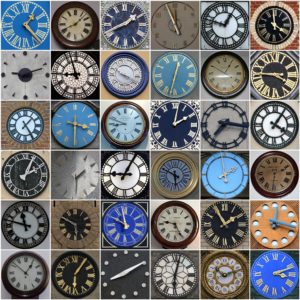
Hot Topics
The Changing Face of AWTE
June 16, 2022
 Even after all these years, we have a hard time referring to Time Spent Listening (TSL) as Average Weekly Time Exposed (AWTE) in Portable People Meter (PPM) markets. We also seem to love those acronyms.
Even after all these years, we have a hard time referring to Time Spent Listening (TSL) as Average Weekly Time Exposed (AWTE) in Portable People Meter (PPM) markets. We also seem to love those acronyms.
As The Ratings Experts, we have the benefit of looking at data from numerous markets in a variety of formats every single survey.
Over time we had developed some rough benchmarks on what constituted a healthy TSL (sorry, we’re old school) for a station. These varied by format. For example, a sports station will generally have higher TSL than a music station. That said, as a general rule, in a 25-54 setting if a station had north of two hours of weekly TSL, they were probably in good shape.
This number was affected by market conditions, of course. What is the competitive format landscape? How does the ethnic skew impact listening? What is the target age range of the station?
Yet, even with all those variables we were able to establish some rough baselines. COVID-19 changed all of that.
Specifically, we have seen a dramatic decrease in market TSL. Prior to the pandemic, it was not unusual to see markets in the nine- and ten-hour range for 25-54 TSL. Now, it is not unusual to see market listening under seven hours a week. Think about what that means. The AVERAGE radio listener in those markets is spending LESS than an hour a day with ALL radio. This trend is even more pronounced with the 18-24 and 25-34 demo cells.
The pandemic shutdown began in March 2020, and it caused TSL to crater. While we have seen it rebound, TSL is nowhere near 2019 levels. Take a minute to run a market listening report in Tapscan comparing your most recent survey with 2019. Chances are you will see a noticeable gap between the two surveys.
All of this has caused us to re-think our TSL standards. IF you are able to exceed that two-hour mark in today’s environment, then you are likely in a strong position.
Big caveat here: TSL is only one part of your Average Quarter Hour (AQH) number. Cume is the other factor. Sometimes a high TSL can be the result of a small but extremely loyal audience. Formats like Christian contemporary come to mind here.
What does this mean? More importantly, what can you do with this information?
Getting cume is difficult. It usually involves marketing dollars and those are in short supply. Squeezing more TSL out of your existing cume is something within your control. Remember that TSL is made up of two data points. Occasions (how often someone gives you five minutes in a quarter hour) and Durations (how long that occasion lasts).
Increasing durations is a nice idea but not always practical. NPR likes to talk about “driveway moments,” but let’s be real. After an hour-long commute, is someone going to sit in their driveway because of a clever tease?
Your best option is to increase occasions of listening. Spinning your audience through different day parts (vertical recycling) or more days of the week (horizontal recycling) has a much better chance of success.
Shameless plug here. We have several proprietary reports that can help you know your audience more intimately. We have charts in Instant Answer that can show you how well you are recycling. Our Exact Age and Hot Zip reports can give you a more granular look at who is listening to your station (and the competition).
Whether you call it AWTE or TSL, how much time your audience spends with your station is a key indicator of how healthy your product is.
-Steve Allan, Programming Research Consultant
Comments